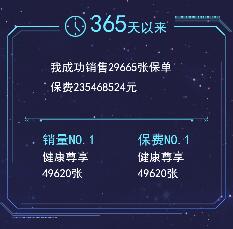上篇文章给大家介绍过vue实现点击按钮下载文件功能,今天继续vue点击按钮下载文件的话题。
最近项目中需要实现点击按钮下载文件的需求,前端用的vue,因为文件是各种类型的,比如图片、pdf、word之类的。这里后端是可以返回文件的地址给前端的,但我看了下网上各种五花八门的答案,感觉都不是我想要的。
因为不确定文件是哪种类型的,所以我们在保存文件到数据库的时候,应该把文件的 Content-Type 一起存入,这样从数据库取出返回前端的时候,带上 Content-Type 标识是哪种类型的文件,前端解析即可。
1、后端代码
这里我先写后端的接口,考虑一下后端需要什么东西。因为文件信息已经提前存入数据库,所以我们只需要传入主键id就可以拿到文件的信息。确定参数后,就需要确定一下返回值类型。这里可以使用 ResponseEntity 返回。 ResponseEntity 可以一次返回多个信息,包括状态码,响应头信息,响应内容等。
话不多说,看代码。
/**
* 下载附件
* @param attachmentId
* @return
*/
public ResponseEntity<byte[]> download(Long attachmentId) {
// 查询附件是否存在
SysAttachment sysAttachment = sysAttachmentMapper.selectSysAttachmentById(attachmentId);
if (StringUtils.isNull(sysAttachment)) {
return null;
}
ByteArrayOutputStream bos = null;
InputStream ins = null;
try {
String fileName = sysAttachment.getOrgFileName();
String ossFileName = sysAttachment.getUrl();
bos = new ByteArrayOutputStream();
ins = OssUtils.getInstance().getObject(ossFileName).getObjectContent();
// 取流中的数据
int len = 0;
byte[] buf = new byte[256];
while ((len = ins.read(buf, 0, 256)) > -1) {
bos.write(buf, 0, len);
}
// 防止中文乱码
fileName = URLEncoder.encode(fileName, "utf-8");
// 设置响应头
HttpHeaders headers = new HttpHeaders();
headers.add("Content-Disposition", "attachment;filename=" + fileName);
headers.add("Content-Type", sysAttachment.getContentType());
// 设置响应吗
HttpStatus statusCode = HttpStatus.OK;
ResponseEntity<byte[]> response = new ResponseEntity<byte[]>(bos.toByteArray(), headers, statusCode);
return response;
} catch (Exception e) {
throw new CustomException("下载失败");
} finally {
try {
if (ins != null) {
ins.close();
}
if (bos != null) {
bos.close();
}
} catch (Exception e) {
throw new CustomException("下载失败");
}
}
}
这里我们从数据库拿出文件的url后,再通过阿里云oss拿到文件的输入流,接着把文件输出为二进制,封装到 ResponseEntity 中,并把文件的类型设置到 Content-Type 中,同时为了防止文件名带有中文名乱码,设置 utf-8 编码,至此后端接口完成。
通过上面的信息,我们在数据库保存文件信息时,至少应该保存下面几个字段:文件的url(一般在上传到oss后会给你一个)、文件的类型、原始文件名、文件大小等。
2、前端代码
有了后端接口,接下来就是前端了。这里可以把文件下载的方法封装成一个通用方法全局挂载,之后需要使用的地方直接使用即可。
我们需要标识不同的文件,所以我们需要一个键值对表示不同的文件。
const mimeMap = {
xlsx: 'application/vnd.openxmlformats-officedocument.spreadsheetml.sheet',
xls: 'application/vnd.ms-excel',
zip: 'application/zip',
jpg: 'image/jpg',
jpeg: 'image/jpeg',
png: 'image/png',
doc: 'application/msword',
docx: 'application/vnd.openxmlformats-officedocument.wordprocessingml.document',
ppt: 'application/vnd.ms-powerpoint',
txt: 'text/plain',
pdf: 'application/pdf'
}
有需要的可以继续补充。接下来自然就是发请求了,这里的返回类型可以设置为 blob ,使用axios直接发送。
/**
* 下载附件
* @param path 接口地址
* @param param 请求参数
*/
export function downloadAttachment(path, param) {
var url = baseUrl + path + param
axios({
method: 'get',
url: url,
responseType: 'blob',
headers: { 'Authorization': getToken() }
}).then(res => {
resolveBlob(res, res.data.type)
})
}
接口地址和请求参数从外部传入。同时需要携带token,不然会跨域访问。拿到后端返回的数据后,需要解析二进制文件,这里定义 resolveBlob 方法,该方法有两个参数,返回对象和文件的类型,文件的类型,我们在后端已经放入 Content-Type 中了,这里直接取。
/**
* 解析blob响应内容并下载
* @param {*} res blob响应内容
* @param {String} mimeType MIME类型
*/
export function resolveBlob(res, mimeType) {
const aLink = document.createElement('a')
var blob = new Blob([res.data], { type: mimeType })
// 从response的headers中获取filename, 后端response.setHeader("Content-disposition", "attachment; filename=xxxx.docx") 设置的文件名;
var patt = new RegExp('filename=([^;]+\\.[^\\.;]+);*')
var contentDisposition = decodeURI(res.headers['content-disposition'])
var result = patt.exec(contentDisposition)
var fileName = result[1]
fileName = fileName.replace(/\"/g, '')
aLink.href = URL.createObjectURL(blob)
aLink.setAttribute('download', fileName) // 设置下载文件名称
document.body.appendChild(aLink)
aLink.click()
document.body.removeChild(aLink);
}
这代码不用多解释了吧,前端大佬们自然看得懂。OK了啊,到这里前后端代码都完成了。
3、使用
使用那就更简单啦。先挂载到全局
import { downloadAttachment } from "@/utils/download"
Vue.prototype.downloadAttac = downloadAttachment
在使用的地方直接调用即可
<el-button
type="text"
icon="el-icon-download"
size="mini"
@click="downloadAttachRow(scope.row.attachmentId)"
></el-button>
/** 下载附件 */
downloadAttachRow(attachId) {
this.$confirm('是否确认下载该文件?', "警告", {
confirmButtonText: "确定",
cancelButtonText: "取消",
type: "warning"
}).then(() => {
this.downloadAttac('/system/attachment/download/', attachId)
}).then(() => {
this.msgSuccess("下载成功")
}).catch(() => {})
}
到此结束。
到此这篇关于Vue实现点击按钮下载文件的操作代码(后端Java)的文章就介绍到这了,更多相关Vue点击按钮下载文件内容请搜索NICE源码以前的文章或继续浏览下面的相关文章希望大家以后多多支持NICE源码!











